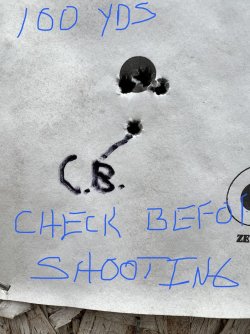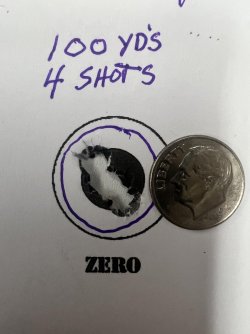How much difference on target is there between the cold bore shot and the rest of the group at 500 and 700 yards? If you're hunting at these distances the cold bore shot is the most important.
Is one shot really enough to consider the barrel warm? It's not on my rifles. I had a hunting rifle with a pencil barrel that would make considerable moves as it heated up. I took one shot about three hours apart to zero it.
I'd probably zero it at 200 yards and let the 100 yard rounds fall where they fall. Then I'd shoot it out to the maximum range (700 yards) in 50 or 100 yard increments and record the clicks required or reticle subtension to hit the bull at each yardage.
This and $1.75 will buy you a cup of coffee in some places.
Is one shot really enough to consider the barrel warm? It's not on my rifles. I had a hunting rifle with a pencil barrel that would make considerable moves as it heated up. I took one shot about three hours apart to zero it.
I'd probably zero it at 200 yards and let the 100 yard rounds fall where they fall. Then I'd shoot it out to the maximum range (700 yards) in 50 or 100 yard increments and record the clicks required or reticle subtension to hit the bull at each yardage.
This and $1.75 will buy you a cup of coffee in some places.
Last edited:


